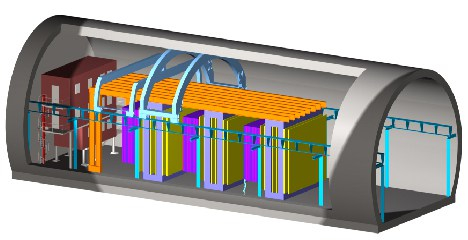Tag: opera experiment
-
The new glitch in OPERA.
( UPDATE, 19.11.2013 — Establishment here refers to the standing of Theory of Relativity in making speed-of-light as 2.99 x 1,00,000 kms/second, therefore they have attacked speed-of-light hypothesis and a cable glitch doesn’t take away their claim, as their claim was made on the basis of Physics in their paper, the glitch only deletes one…
-

OPERA anomaly analysis
In this paper we bring out a remarkable consistency of theory of Relativity in explaining the anomalous excess of speed of neutrinos observed in the recent baseline experiment of OPERA. The OPERA experiment is performed by shooting neutrinos produced from protons at SPS, CERN to the laboratory at Gran-Sasso where OPERA has placed its neutrino…
-

UPDATE TO: OPERA has lost it’s claim of superluminal neutrino.
A stringent constraint on OPERA speed-excess: Planck’s constant = 6.6 10^(-7) eV-nanosecond; A neutrino mass of 2 eV has to be measured to better than 1.15 eV to see any superluminal excess. — After I fixed mistakes in my binomial-expansion. At or above this error you see (7.5 + >= 7.5 ) km/second, you can…
-

I claim that, OPERA has lost; it’s claim of superluminal neutrino.
My finding was thus, as you see in the equation described in the above analysis (image), if OPERA finds it’s neutrino with energy-error in the order of 1 eV such that its time-error is in the order of 1 nanosecond it will see speed excess (or anomaly) in the order of 7.5 km/second consistent with…